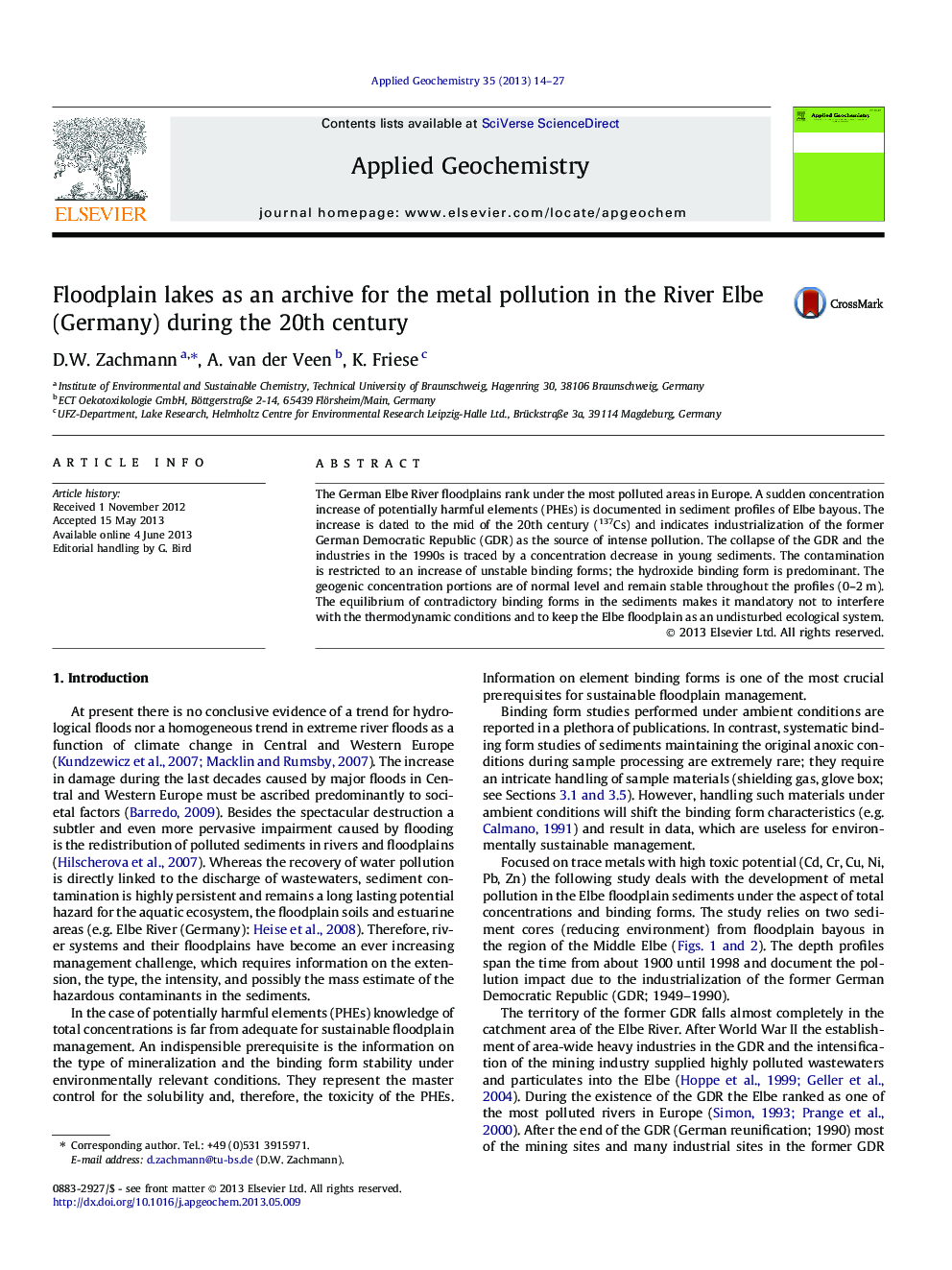| کد مقاله | کد نشریه | سال انتشار | مقاله انگلیسی | نسخه تمام متن |
|---|---|---|---|---|
| 6335327 | 1620256 | 2013 | 14 صفحه PDF | دانلود رایگان |
- A floodplain sediment sequence (about 1900-1998) was analyzed on potentially harmful elements.
- High sediment contamination by industry restricted to unstable metal binding forms.
- After closure of industries (1990) the level of floodplain contamination perpetuates.
- Antagonistic binding forms indicate a sensitive equilibrium in sediments.
- Floodplain management requires the stabilization of the environmental equilibrium.
The German Elbe River floodplains rank under the most polluted areas in Europe. A sudden concentration increase of potentially harmful elements (PHEs) is documented in sediment profiles of Elbe bayous. The increase is dated to the mid of the 20th century (137Cs) and indicates industrialization of the former German Democratic Republic (GDR) as the source of intense pollution. The collapse of the GDR and the industries in the 1990s is traced by a concentration decrease in young sediments. The contamination is restricted to an increase of unstable binding forms; the hydroxide binding form is predominant. The geogenic concentration portions are of normal level and remain stable throughout the profiles (0-2Â m). The equilibrium of contradictory binding forms in the sediments makes it mandatory not to interfere with the thermodynamic conditions and to keep the Elbe floodplain as an undisturbed ecological system.
Journal: Applied Geochemistry - Volume 35, August 2013, Pages 14-27
